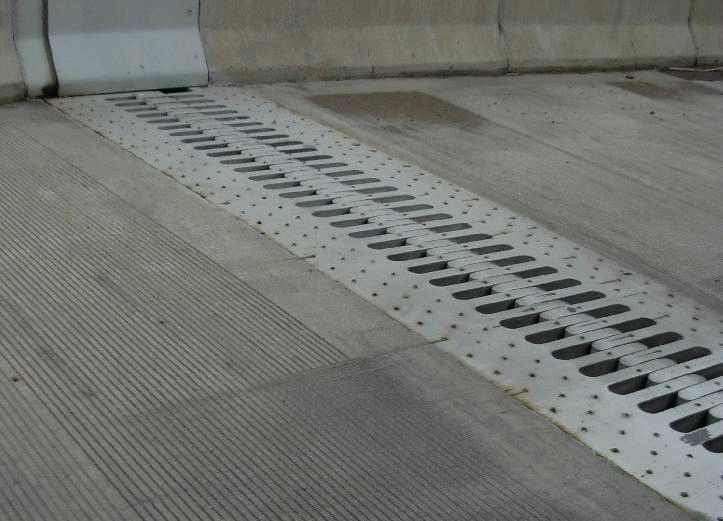Expansion of Solids
Thermal Physics > Thermal Expansion
 Bridge Joints
The purpose of an expansion joint on a bridge is it to permit the components to expand and contract with changing temperatures without stressing the entire bridge structure.
Bridge Joints
The purpose of an expansion joint on a bridge is it to permit the components to expand and contract with changing temperatures without stressing the entire bridge structure.
The tendency of matter to change in volume in response to a change in temperature. Materials which contract with increasing temperature are rare; this effect is limited in size, and only occurs within limited temperature ranges.
The degree of expansion divided by the change in temperature is called the material's coefficient of thermal expansion and generally varies with temperature.
-
Linear Expansion of solids: When a metal rod is heated, its length increases (it expands). The increase in length depends on the original length of the rod, the rise in temperature, and the nature of the material of the rod.
Coefficient of Linear Expansion
= Increase in length /(Initial length – Rise in temp) (°C) -
Superficial Expansion of Solids: Expansion in area of a Laminar surface due to heating is known as superficial expansion. The coefficient of superficial expansion is defined as the ratio of increase in area to its original area for every degree increase in temperature.
Coefficient of superficial expansion
= Increase in area / (Initial area – Rise in temp) (° C)
= 2 × coefficient of linear expansion -
Cubical Expansion of Solids: In the case of solids which have a definite shape, when they are heated they expand in all directions i.e., Length, Height and Width.
Coefficient of cubical expansion
= Increase in volume/(initial volume × rise in temp (°C)
The coefficient of Cubical expansion of solids is 3 times more than coefficient of linear expansion.
Coefficients of Cubical Expansion = 3 × Coefficients of Linear Expansion.